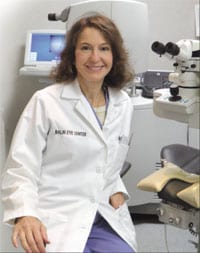New Technology for Managing Cancer: Cooley Dickinson Offers PET/CT Scanning
NORTHAMPTON – Providing access to leading-edge imaging technology for its patients, Cooley Dickinson Hospital now offers PET/CT, a form of advanced, non-invasive imaging used to diagnose and manage cancer as well as brain disorders and heart disease.
The GE Discovery ST PET/CT system combines two types of imaging technology: positron emission tomography (PET) and computer tomography (CT). PET creates images that show how the body is functioning, while CT allows the physician to see the body’s anatomic structure. According to GE Medical Systems, the manufacturer of the Discovery ST, PET/CT is “becoming the standard of care” at community hospitals and signifies a “breakthrough in diagnostic care, providing both functional and anatomical information in a single image.”
When the PET/CT images are combined, the patient’s complete imaging picture is revealed, providing the physician with important information about the disease and allowing the physician to target treatment. With the combined image, says radiologist Dr. David Rifken, “the interpreting physician can more accurately diagnose and identify cancer, in particular.”
In the past, Rifken said there was a need to perform separate imaging studies, often on different dates, and to then visually compare them. “Now, these studies can be performed simultaneously and evaluated as fused images, increasing diagnostic confidence” and, at the same time, he adds, make the process more convenient and less time-consuming for patients.
The design of the Discovery ST system allows for increased patient comfort, too. A larger opening and a shorter tunnel length mean that there is more flexibility when positioning larger patients, and the open design helps those who may experience claustrophobia.
Medical oncologist Dr. George Bowers, medical director of the CDH Cancer Care Program, says a combined PET/CT scan provides the oncologist with a more comprehensive evaluation of a patient’s condition. “PET/CT imaging gives us the ability to more accurately stage and evaluate the disease,” he said, and following that interpretation, “this technology allows us to recommend the most appropriate treatment.”
Prior to PET/CT, radiation oncologists Dr. Robert Stein and Dr. Linda Bornstein relied on magnetic resonance imaging (MRI) or CT imaging to indicate cancerous masses in the body. But with advances in imaging technology including PET/CT, radiation oncologists now have a diagnostic tool to pinpoint the location of a tumor. Stein said that with a more precise definition and better location of a tumor, radiation oncologists can better manage the treatment of the disease.
“Using PET/CT scanning means we can determine the exact location of cancerous tissue and also rule out the benign tissue, which might have been assumed to be malignant based on a CT scan,” said Stein. “If we find a tumor is localized and hasn’t spread to other organs, we can treat it more aggressively. This is what we mean when we say that PET/CT improves physicians’ diagnostic confidence when treating cancer patients.”
Before the PET/CT scan, the patient receives a dose of a radiopharmaceutical tracer containing substances that mimic those normally used in the body including water, sugars, proteins, and oxygen. These tracers accumulate in the diseased cells. During the PET/CT scan, the tracers are detected by the system creating an image of the patient and highlighting any abnormal physiology. This image helps Cooley Dickinson physicians determine if disease is present, the location and extent of disease, and allows them to track how rapidly the disease is spreading.

